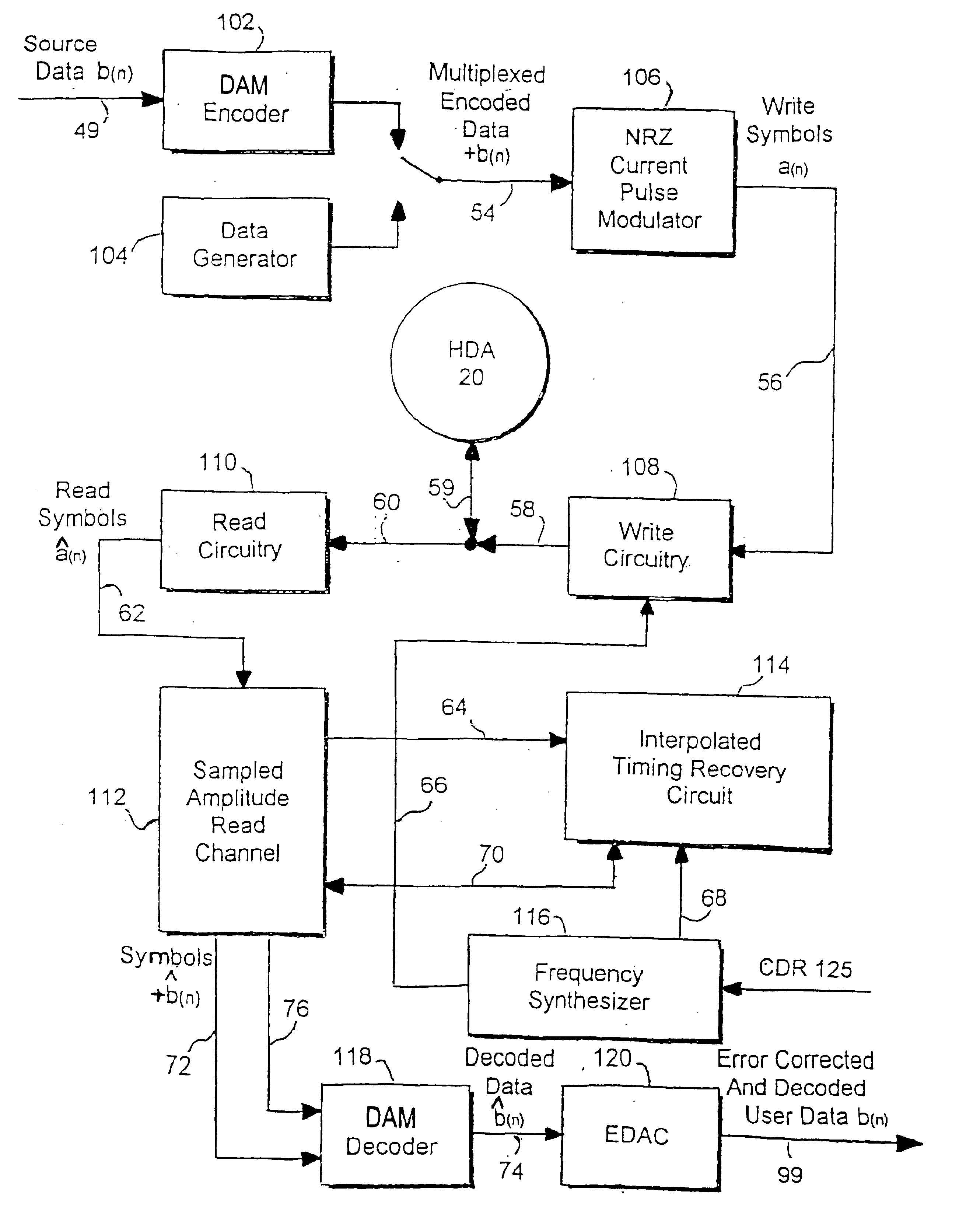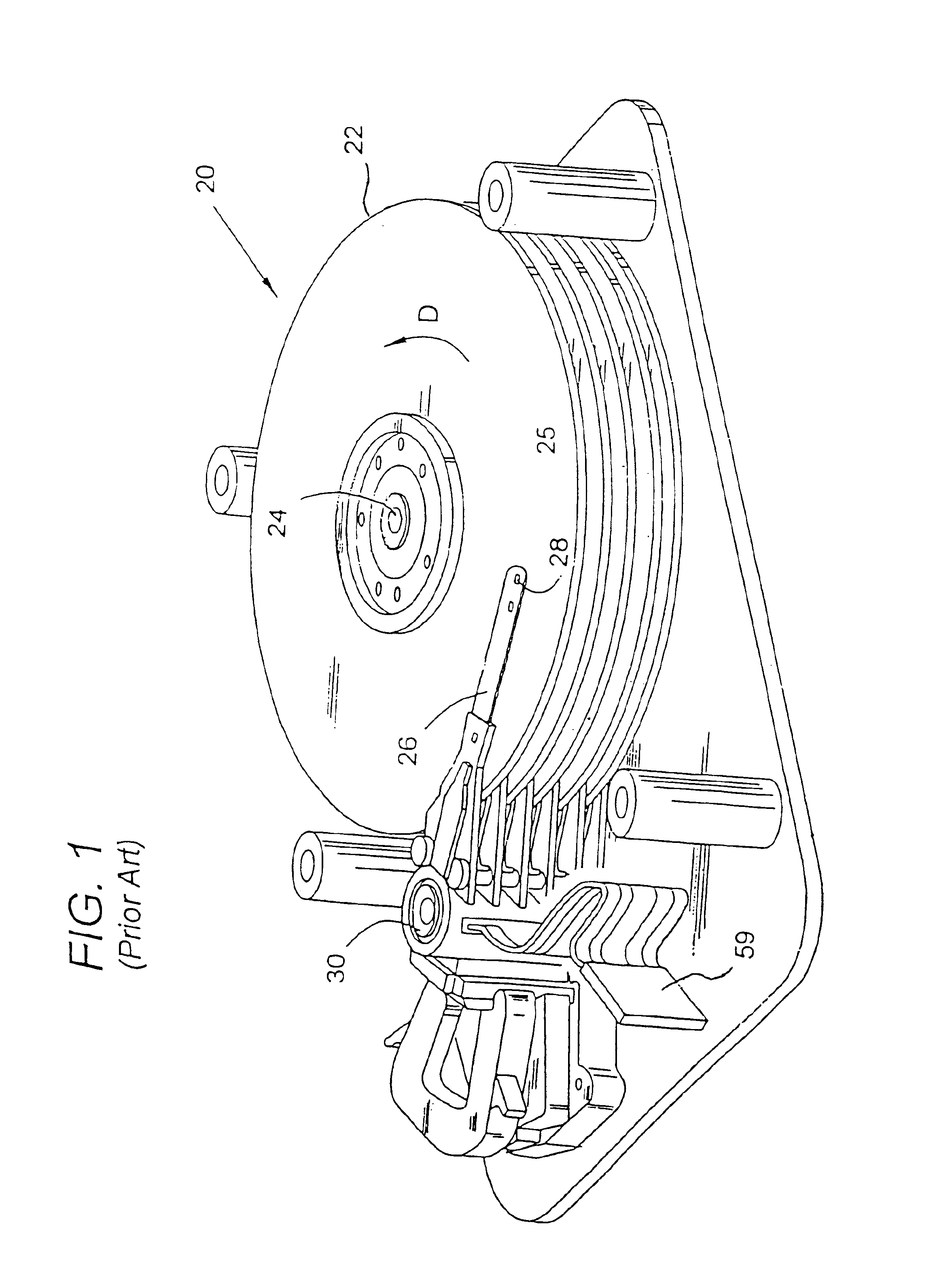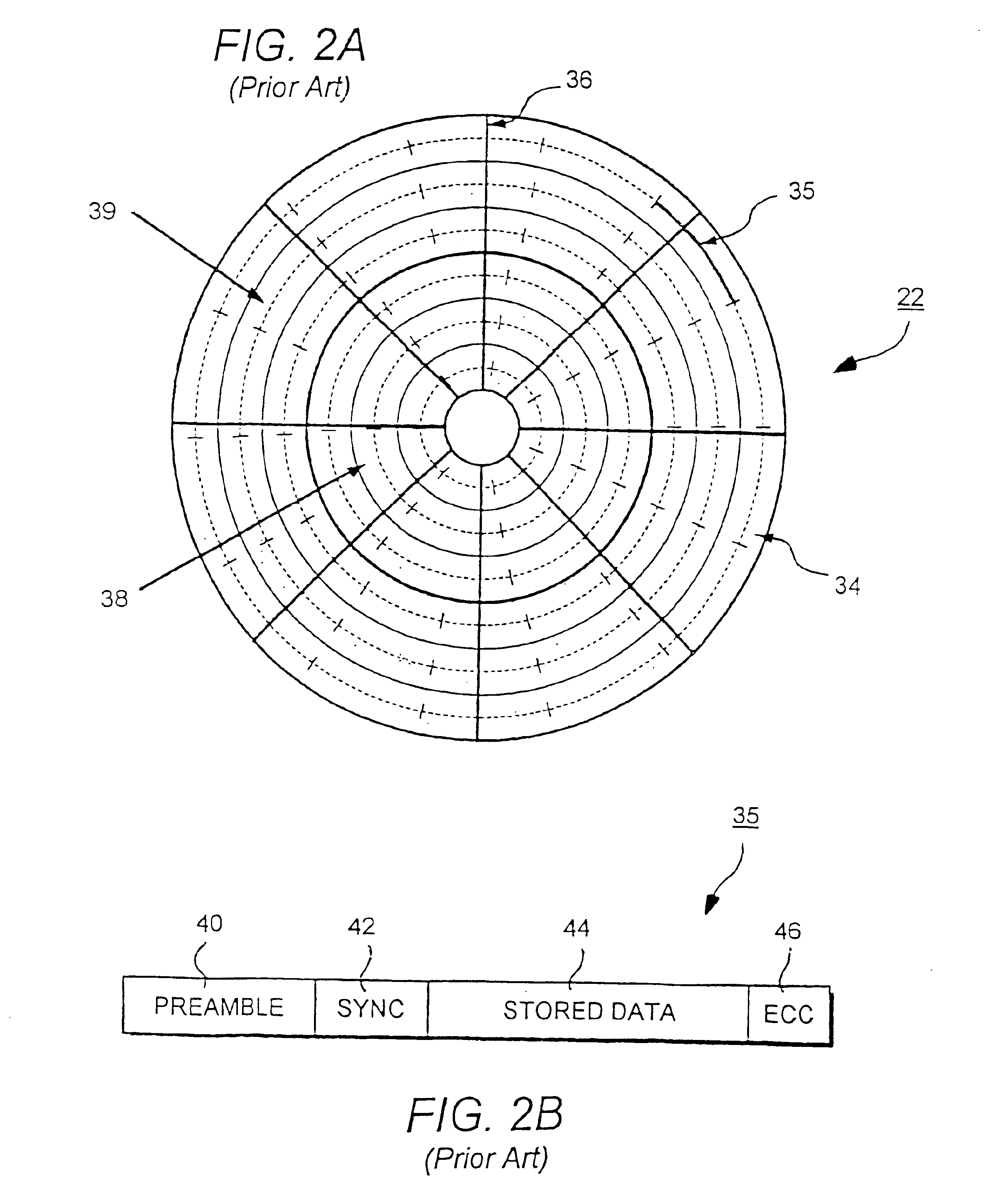Double-attribute method of encoding and decoding magnetic data
a magnetic data and attribute technology, applied in the field of magnetic disk data storage systems, can solve the problems of increasing disk space, and requiring significantly more disk space, and achieve the effect of increasing the storage capacity of the hdd and high performan
- Summary
- Abstract
- Description
- Claims
- Application Information
AI Technical Summary
Benefits of technology
Problems solved by technology
Method used
Image
Examples
Embodiment Construction
[0112]FIG. 1 illustrates a head / disk assembly (HDA) 20 of the type used in a preferred embodiment of the present invention. A plurality of disks 22 are stacked in a vertical array and mounted on a common drive spindle 24. The disks 22 rotate counter-clockwise (indicated by arrow D) at a substantially constant rate. In the preferred embodiment, disks 22 rotate at 400 rpm (revolutions per minute), the reasons for which are detailed below. A magnetic recording surface 25 is affixed to both sides (top and bottom) of each disk 22. The recording surface 25 comprises a magnetic thin film medium such as cobalt alloy.
[0113]Each recording surface 25 is accessed by a dedicated actuator arm 26 with a distal end carrying a flying read / write head 28. Although FIG. 1 illustrates five disks 22, six actuator arms 26, and six heads 28, it is to be understood that the number of disks 22, arms 26, and heads 28 used in a given implementation of this invention can be any non-negative integer of at least ...
PUM
| Property | Measurement | Unit |
|---|---|---|
| time | aaaaa | aaaaa |
| width | aaaaa | aaaaa |
| magnetic domains | aaaaa | aaaaa |
Abstract
Description
Claims
Application Information
 Login to View More
Login to View More - R&D
- Intellectual Property
- Life Sciences
- Materials
- Tech Scout
- Unparalleled Data Quality
- Higher Quality Content
- 60% Fewer Hallucinations
Browse by: Latest US Patents, China's latest patents, Technical Efficacy Thesaurus, Application Domain, Technology Topic, Popular Technical Reports.
© 2025 PatSnap. All rights reserved.Legal|Privacy policy|Modern Slavery Act Transparency Statement|Sitemap|About US| Contact US: help@patsnap.com



